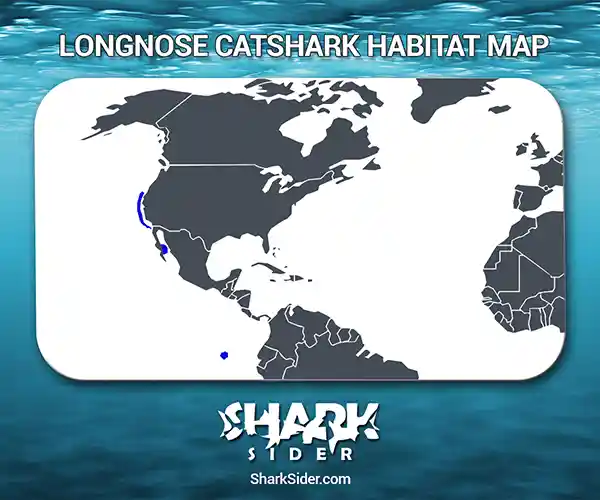The Longnose catshark is a deepwater ground shark in the northeast Pacific Ocean. Its scientific name, Apristurus kampae, honors Elizabeth Kampa Boden, the chief scientist on the expedition that led to its discovery.
Longnose Catshark Scientific Classification |
|
| Kingdom | Animalia |
| Phylum | Chordata |
| Class | Chondrichthyes |
| Order | Carcharhiniformes |
| Family | Scyliorhinidae |
| Genus | Apristurus |
| Scientific name | A. kampae |
Description
These sharks are moderately sized, averaging 50 cm (1.65 ft) for males and 48-52 cm (1.6-1.7 ft) for females. The largest on record is an adult measuring 58.4 cm (1.9 ft).
They are named after their characteristic long, flat snout, topped by narrow nostrils and cat-like eyes. The mouth is broad and arched and reaches behind the eyes, right up to the enormous gill slits. The teeth are sharp and rough. Their bodies are blackish or dark brown, with distinctive white margins on their fins.
They have long pectoral and pelvic fins. The anal fin is rounded, and its length is twice its height. The two dorsal fins are similar-sized, with the first originating behind the pelvic fins. A small notch separates the long tail fin from the anal fins.
Where do they live
Map Of The Longnose Catshark’s Habitat

This species is native to the eastern North Pacific Ocean, in the latitude range of 38°N-23°N. It commonly occurs in the Gulf of California, with sightings occurring throughout Central and South California and Mexico. It has been reported near the Galapagos Islands, but that is unconfirmed.
It is a bottom-dweller inhabiting the upper continental slope at depths of up to 1,890 m (6,200 ft).
Behavior
Dietary
They primarily hunt deepwater cephalopods, crustaceans, and bony fish.
Reproductive
The females are oviparous and lay pairs of eggs, with one from each oviduct. Newborns are generally about 14 cm (5.5 in) long.
Predatory
They hunt nocturnally, often resting in groups during the day and becoming active at night.
Adaptations
They share many traits with other sharks, such as a keen sense of sight and smell, sharp teeth, and streamlined bodies.
Human interactions
Due to their deep-sea habitat, not much is known about this species, and they are caught only as bycatch by bottom trawlers and sablefish traps.
The IUCN has listed this shark as “Data Deficient” or “DD.”
